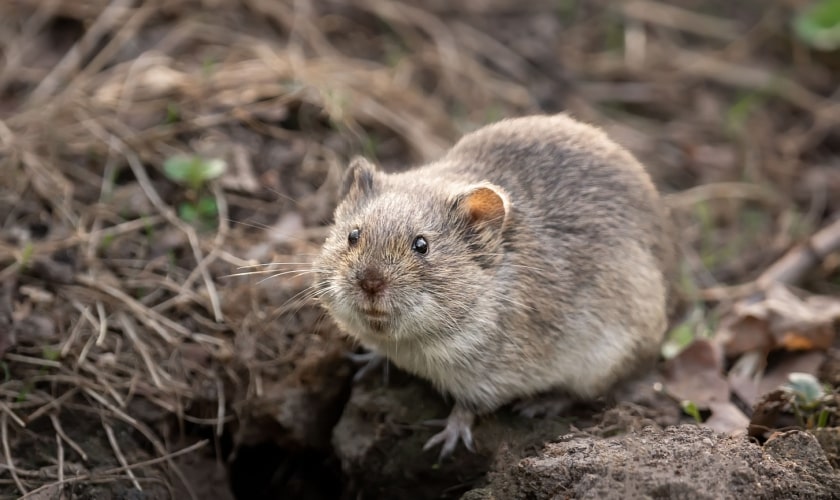Comprehensive Guide to Reliable Vole Parasite Control: Invasion Identification and Therapy Techniques
In the realm of reliable insect control, vole invasions posture an unique difficulty that requires a tactical strategy. By checking out the nuances of vole behavior, understanding key indications of problem, and assessing a variety of control choices, one can develop an extensive strategy to combat these evasive parasites.
Comprehending Vole Habits
Vole behavior is identified by their burrowing routines and fast reproduction rates, making them a tough bug to manage properly. Their fast reproductive price further makes complex control initiatives, with women qualified of creating multiple litters in a solitary year, each consisting of a number of children.
Voles are most active throughout the early morning and night hours, investing the majority of their time foraging for food. Their burrowing habits not only disrupt gardens and lawns yet likewise make them testing to eliminate and find. Comprehending vole behavior is essential for efficient pest control strategies. By identifying their burrow areas, keeping track of feeding locations, and implementing targeted control methods, such as trapping or habitat adjustment, vole invasions can be managed successfully.
Signs of Vole Problem

Prevention Techniques
Applying reliable prevention methods is important in minimizing vole infestations and safeguarding plants from their devastating feeding behaviors (vole yard damage). To stop vole infestations, it is vital to begin by removing possible food resources and sanctuary. Maintain grass and greenery cut short, eliminate weeds and debris, and keep a neat yard or yard to make the area less attractive to voles. Mounting barriers such as hardware towel or below ground fence can likewise assist deter voles from entering details locations. Furthermore, lowering excess dampness by taking care of dripping pipelines and making sure correct drain can make the atmosphere much less welcoming for voles.
Consistently evaluating the property for indicators of vole task, such as runways and tunnel openings, is critical for very early detection and timely action. Take into consideration utilizing repellents or traps strategically placed near their paths if vole task is thought. Using look these up natural predators like snakes or owls can additionally assist maintain vole populations in check. By applying a combination of these prevention house owners, techniques and gardeners can successfully shield their plants from vole damages.
Non-Lethal Control Approaches
To effectively take care of vole populations while prioritizing humane approaches, non-lethal control methods supply practical remedies for minimizing vole damage in yards and landscapes. One efficient method is using physical obstacles such as equipment cloth or cord mesh to protect prone plants. These barriers can be hidden at the very least 12 inches deep and bent at a 90-degree angle to avoid voles from delving below. Furthermore, habitat adjustment can discourage voles by minimizing their preferred food sources their website and concealing spots. Maintaining a well-mowed yard, removing debris, and maintaining greenery cut can make the atmosphere less appealing to voles.

Lethal Control Options
One effective technique for resolving vole problems in landscapes and gardens includes the critical usage of dangerous control options. When faced with an extreme vole problem that non-lethal methods have actually fallen short to include, carrying out lethal control steps ends up being important. useful reference Overall, when employing dangerous control choices, it is vital to do so properly and in accordance with neighborhood guidelines to successfully handle vole infestations.
Final Thought
Finally, effective vole pest control requires a comprehensive understanding of vole habits, identification of indicators of problem, implementation of prevention approaches, and use of both non-lethal and deadly control methods. By incorporating these strategies, people can successfully handle vole populations and secure their residential property from damage. It is important to resolve vole invasions immediately to avoid additional concerns and decrease the influence on the surrounding setting.
Provided the detailed passage systems and quick reproduction prices particular of voles, acknowledging the signs of vole problem comes to be crucial in efficient parasite control. One of the main signs of vole presence is the presence of surface paths or routes in turf or snow, normally regarding 1-2 inches large, developed as voles take a trip between their burrows and food resources.To properly take care of vole populations while prioritizing humane methods, non-lethal control approaches use practical services for decreasing vole damage in yards and landscapes.One efficient technique for dealing with vole problems in landscapes and yards involves the tactical usage of dangerous control options. vole yard damage.In verdict, effective vole parasite control needs a thorough understanding of vole behavior, identification of indications of infestation, execution of prevention methods, and use of both non-lethal and lethal control approaches